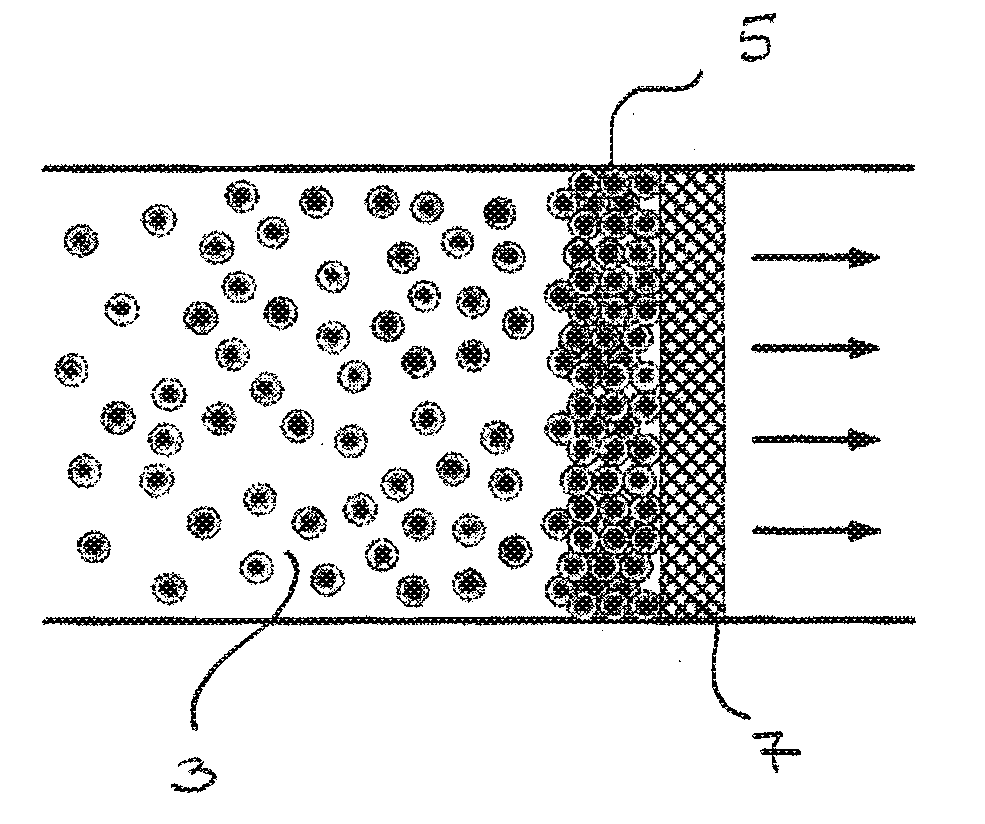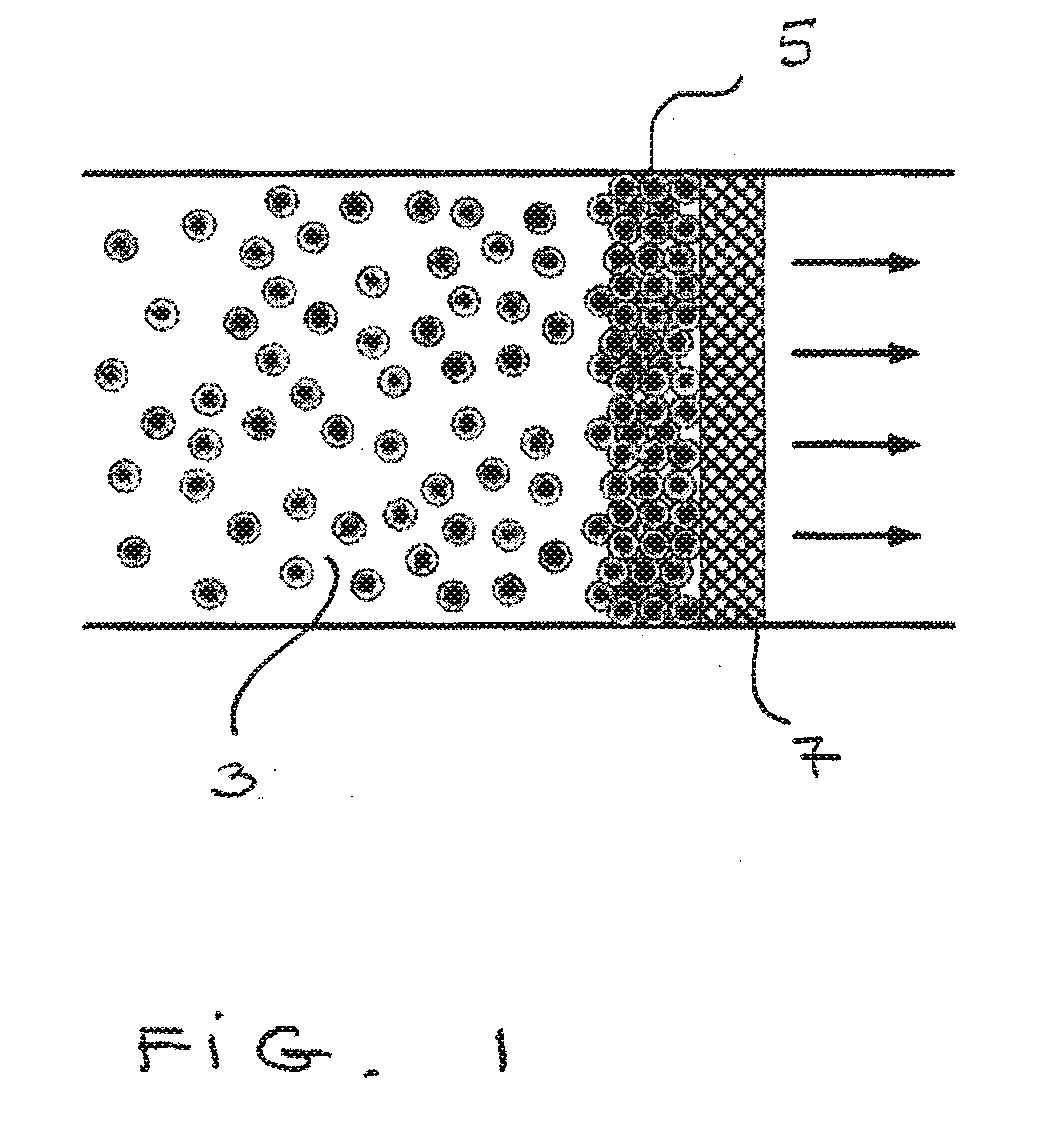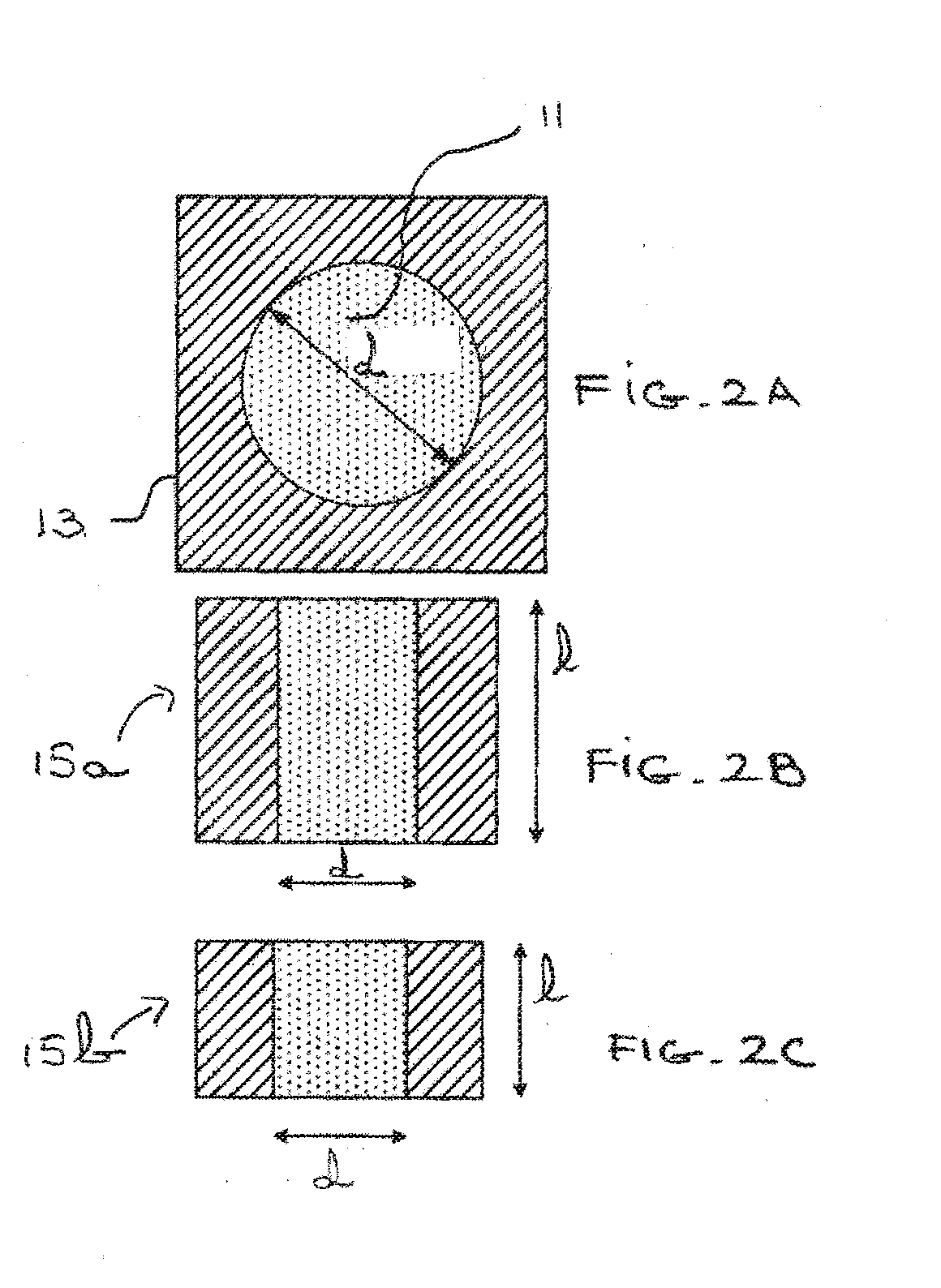Aerogel-Based Filtration of Gas Phase Systems
a technology of gas phase system and aerogel, which is applied in the direction of filtration separation, liquid degasification, separation process, etc., can solve the problems of filter blockage, filter clogging, and high pressure drop with increasing loading, and achieve low pressure drop, high capacity, and high efficiency
- Summary
- Abstract
- Description
- Claims
- Application Information
AI Technical Summary
Benefits of technology
Problems solved by technology
Method used
Image
Examples
examples
[0106]Experiments described below were conducted using a set-up arrangement identical or similar to that shown in FIG. 7. Shown in FIG. 7 is apparatus 200, which included a clean air source, an aerosol generation system composed of atomizer 210 for the generation of submicron size droplets or the atomization of a suspension containing submicron solid particles such as polystyrene latex spheres (PSLS), drier 212 for removal of the solvent that contained the solid or liquid particles. Also included was particle counter system 214 located upstream of the filters. It included a Condensation Particle Counter (CPC) and a Scanning Mobility Particle Sizer (SMPS). A CPC 216 also was provided at diluter 218.
[0107]The atomizer was used to disperse solid polystyrene latex spheres (PSLS). A suitable Scanning Mobility Particle Sizer (SMPS) classified particles in the range of 15 to 800 nanometers, while Condensation Particle Counters (CPC) can count particles in the range of 0.015 microns to 2 mi...
example 1
[0128]Customized filters made of aerogel particles available from Cabot Corporation, Billerica, Mass. under the tradename of Nanogel®, were first challenged against submicron oil droplets. In FIG. 9A, the number collection efficiency of packed filters is plotted against the particle size of the challenging aerosol. As seen in the plot, at low at low gas velocities the collection efficiencies of packed beds of Nanogel® performed well. In particular, the packed bed of Nanogel® granules with sizes between 150-250 microns, 3 inches in depth (solid line A), showed an almost 100% collection efficiency. Two Nanogel® formulations were tested: Nanogel I corresponded to a translucent grade (TLD) and Nanogel II corresponded to an opaque grade (OGD). No significant difference between the two was observed in the air filtration experiments.
[0129]Fluidized beds of Nanogel® particles of sizes below 150 microns also were tested against oil droplets and FIG. 9B shows the collection efficiency of flui...
example 2
[0132]Customized filter modules also were challenged against submicron solid particles, specifically PSLS with nominal size of 0.3 microns. FIG. 10A shows the collection efficiency of packed filter modules of 3 inches in depth made of granules of different sizes as detailed in the legend of the figure. It can be seen that at low gas velocities, the customized filters showed acceptable collection efficiencies. The module containing granules in the range of 150-250 microns gives a collection efficiency of about 99.9% (solid line A), which is an improvement over HEPA filters.
[0133]Fluidized beds of Nanogel® aerogel, were challenged against submicron particles generated by atomizing PSLS with a nominal size of 0.3 microns. The collection efficiency of the fluidized beds is shown in FIG. 10B indicating that performance of the fluidized bed for capturing submicron particles was comparable to HEPA filters.
PUM
| Property | Measurement | Unit |
|---|---|---|
| droplet size | aaaaa | aaaaa |
| droplet size | aaaaa | aaaaa |
| particle size | aaaaa | aaaaa |
Abstract
Description
Claims
Application Information
 Login to View More
Login to View More - R&D
- Intellectual Property
- Life Sciences
- Materials
- Tech Scout
- Unparalleled Data Quality
- Higher Quality Content
- 60% Fewer Hallucinations
Browse by: Latest US Patents, China's latest patents, Technical Efficacy Thesaurus, Application Domain, Technology Topic, Popular Technical Reports.
© 2025 PatSnap. All rights reserved.Legal|Privacy policy|Modern Slavery Act Transparency Statement|Sitemap|About US| Contact US: help@patsnap.com



